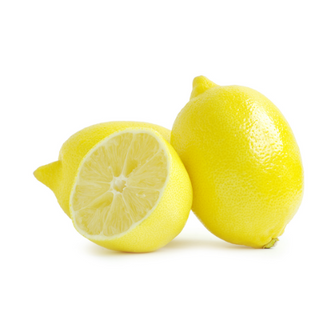Homemade Paneer: Fresh & Creamy Indian Cheese Made Easy
- Steve Holloway

- Aug 17, 2025
- 4 min read
Updated: Aug 23, 2025
Introduction
Paneer, a staple in Indian cuisine, is a fresh and creamy cheese that’s incredibly versatile—perfect for curries, snacks, and even desserts. Making paneer at home is surprisingly simple and requires just two basic ingredients: milk and an acidic agent like lemon juice or vinegar. With this easy recipe, you’ll learn how to create soft, melt-in-your-mouth paneer that’s far superior to store-bought versions, bringing authentic flavours right to your kitchen!

Cuisine -World - Cheese- Makes 100g
Cooking times, for Paneer Cheese
Prep time is about 5 minutes,
Cooking time is approximately 15 minutes.
After cooking, you’ll need an additional 30–40 minutes for the paneer to set under a weight. So, in total, you can expect the entire process to take around 50–60 minutes from start to finish.
Recipe Difficulty level - Beginner-Friendly
Special equipment - None
Heat level - None
Nutrition values for Paneer Cheese
For 100 grams of homemade paneer made from whole milk, the approximate nutritional values are:
Calories: 265 kcal,
Protein: 18 grams,
Fat: 20 grams,
Carbohydrates: 6 grams,
Calcium: 480 mg.
These values can vary slightly based on the milk’s fat content and the exact yield, but homemade paneer is generally a good source of protein and calcium while being relatively low in carbohydrates.
A little History
Paneer has a rich history in South Asian cuisine, with its origins tracing back to ancient India. Unlike many other cheeses, paneer is a fresh, non-aged cheese that’s made without rennet, making it suitable for vegetarians. Historical records suggest that paneer was introduced to the Indian subcontinent by Persian and Afghan rulers, and over centuries, it became a staple in North Indian kitchens. Today, paneer is celebrated in a variety of dishes, from classic curries like palak paneer and paneer tikka to sweets and snacks, reflecting its enduring popularity and versatility in Indian cooking.
Homemade paneer transforms simple milk into a creamy, protein-rich delight that forms the heart of countless beloved Indian dishes—fresh, pure, and made with just two ingredients!
Recipe for Paneer Cheese
Ingredients:
1 liter of full-fat milk
2 tablespoons of lemon juice or white vinegar
How to make Paneer Cheese
Click here for Kitchen Timer
To make homemade paneer, start by bringing 1 liter of full-fat milk to a gentle boil in a heavy-bottomed pan, stirring occasionally to prevent burning. Once it begins to boil, lower the heat and add 2 tablespoons of lemon juice or white vinegar, stirring gently. The milk will curdle as the whey separates; if it doesn’t, add a little more acid. Turn off the heat and let it sit for 2–3 minutes.
Line a colander with a clean muslin cloth or cheesecloth, and pour the curdled milk through it to collect the paneer curds. Rinse with a little cold water to remove the acidic taste, then gather the cloth’s edges and squeeze out excess water.
Place the wrapped paneer on a flat surface, set a heavy object on top, (I usually put it on a plate with another on on top to disperse the weight evenly) and let it rest for 30–40 minutes to set into a firm block.
Cut into cubes and use as desired in your favourite recipes!
Recipe Ideas:
Frequently asked questions for
Can I use low-fat or skim milk to make paneer?
While you can use low-fat or skim milk, full-fat milk yields softer, creamier, and richer paneer. Lower-fat options may result in a firmer, less creamy texture.
Why didn’t my milk curdle when I added lemon juice or vinegar?
If the milk doesn’t curdle, try adding a little more lemon juice or vinegar and gently heat for another minute. Make sure the milk is hot enough, as curdling happens best at near-boiling temperature.
How long can I store homemade paneer?
Homemade paneer can be stored in an airtight container in the refrigerator for up to 3–4 days. For best texture, immerse it in water to keep it moist.
Can I freeze paneer?
Yes, you can freeze paneer for up to 2 months. Thaw it in the refrigerator before use, though texture may become slightly crumbly.
Do I need to add salt or any seasoning while making paneer?
Paneer is traditionally made plain, but you can add a pinch of salt to the milk after curdling if you prefer a little extra flavour.
Print recipe in plain format
Conclusion
With just a few simple steps and basic ingredients, you can create fresh, delicious paneer right in your own kitchen—perfect for elevating your favourite Indian dishes. Homemade paneer is softer, tastier, and more satisfying than store-bought versions, and making it yourself connects you to the heart of authentic Indian cooking. Thanks for choosing Stevie’s Curry Magic—happy cooking and enjoy the magic of homemade paneer!
Why not share me on Social Media!
Save this pin to your favourite board or social media account to keep all of Stevie's Curry Magic recipes and culinary tips at your fingertips for your next tasty adventure. By pinning and sharing, you'll have quick access to inspiring ideas for delicious curries and food magic that will impress family and friends. Please comment, upload your own pictures, and subscribe for more exciting recipes and culinary inspiration. Happy cooking and exploring new tastes with Stevie's Curry Magic!
You'll find my social buttons at the top and bottom of every recipe!

Please leave a comment below to share your own experience in preparing this recipe.
Cheers Steve.

















Comments